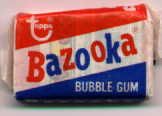This is dedicated to all those caring teachers who worked so hard over the last few weeks despite being tired or having their own problems to make the holidays special for their students.
As a teacher, I don’t have to tell other teachers how important it is to look behind student smiles during the holidays—and always. Teachers know this. They are better than any iChrome or tech device when it comes to understanding problems children might be facing.
Children and teens are proud. They could be going through the worst time in their lives and still smile and tell you everything is fine.
Often, though, it is their teachers they will confide in–who they see as those who care.
This is especially true during the holidays when we are all supposed to be happy and in fine form. It’s the time of year where magic is supposed to happen.
Unfortunately, for many children magic never happens. Teachers are especially cognizant of this fact.
So when expectations are high for a magical Christmas, and your student’s Dad comes home without a job, or they have to duck bullets on their block after the church Christmas party, or they lose grandma to cancer, it isn’t quite Norman Rockwell no matter how a kid tries to imagine it.
I am reminded of a student I once worked with who I will call Joe.
Joe was not well-liked. He was kind of sneaky, smiling all the time, and teachers didn’t trust him. He was a poor kid.
Most all teachers know a Joe or Jolene for that matter. These are the students that present themselves badly. Joe would say and do inappropriate things. He often got called to the office.
About a week before Thanksgiving when I taught Joe, he got in trouble and was suddenly absent.
My students had worked hard. Thanksgiving week was short. On the day before the break we had a party. I’d brought in pies and everyone was eating and playing chess and other board games.
After being out of class for so many days, in walked Joe. He had a big smile on his face.
Joe had not done any schoolwork, and he’d been in enough trouble to be suspended. Why he was returning to my class the day before Thanksgiving break surprised me.
I looked at Joe, Joe looked at me, and my students all stopped eating their pie. My behavioral plan was on trial. Joe hadn’t done any schoolwork for a week!
If I followed any kind of class disciplinary plan, I would have made Joe sit apart from the other students to do make-up work.
But I could not do it.
“Joe,” I said, “You apparently got in some trouble. I don’t know what it was, but it is Thanksgiving, and no matter your difficulties I am thankful for you. You are a part of this class and we are all thankful for Joe, so sit down and have some pie!”
I also got a packet of make-up work for him to take home. I wasn’t that big a pushover I remember thinking.
At the end of the day I was erasing the chalkboard when I heard a click. Joe had sneaked back into the classroom when my back was turned. I ran to the door and watched him race down the hall. My desk was near the door and my purse had been sitting on my desk. It was still there intact.
And then I looked down.
Joe had placed on my desk one piece of Bazooka chewing gum.
Now I have had some precious gifts from students, but that piece of Bazooka gum was very special.
Teachers know…it is those meaningful moments that make teaching what it is. It doesn’t have to be Christmas either. It involves connections. Just a bit of magic but magic nonetheless.
It is looking behind the smiles. It is caring unconditionally for students despite their difficulties and mistakes in life.
No computer can compete with that kind of real personalized learning.
I know teachers have similar stories. Feel free to share them this holiday season.
Merry Christmas and Happy Holidays!


Thank you Nancy! I am reminded of this quote from Alfie Kohn:
“When -ized is added to personal, again, the original idea has been not merely changed but corrupted — and even worse is something we might call Personalized Learning, Inc. (PLI), in which companies sell us digital products to monitor students while purporting to respond to the differences among them.
“Personal learning entails working with each child to create projects of intellectual discovery that reflect his or her unique needs and interests. It requires the presence of a caring teacher who knows each child well.
“Personalized learning entails adjusting the difficulty level of prefabricated skills-based exercises based on students’ test scores. It requires the purchase of software from one of those companies that can afford full-page ads in Education Week.”
https://www.washingtonpost.com/news/answer-sheet/wp/2015/02/24/four-reasons-to-seriously-worry-about-personalized-learning/
Thanks, Sheila. I think “personalized” was stolen from special ed. It is troubling that the same people who scoffed at lowering class sizes so teachers could get to know their students now sell the idea of online personalizing.
“Personalized” suggests that something “impersonal” is being constructed to give individual attention. As a teacher, I don’t “personalize.” As a human teacher I build and sustain human connections to each child.
Thanks for your thoughts, Terry.